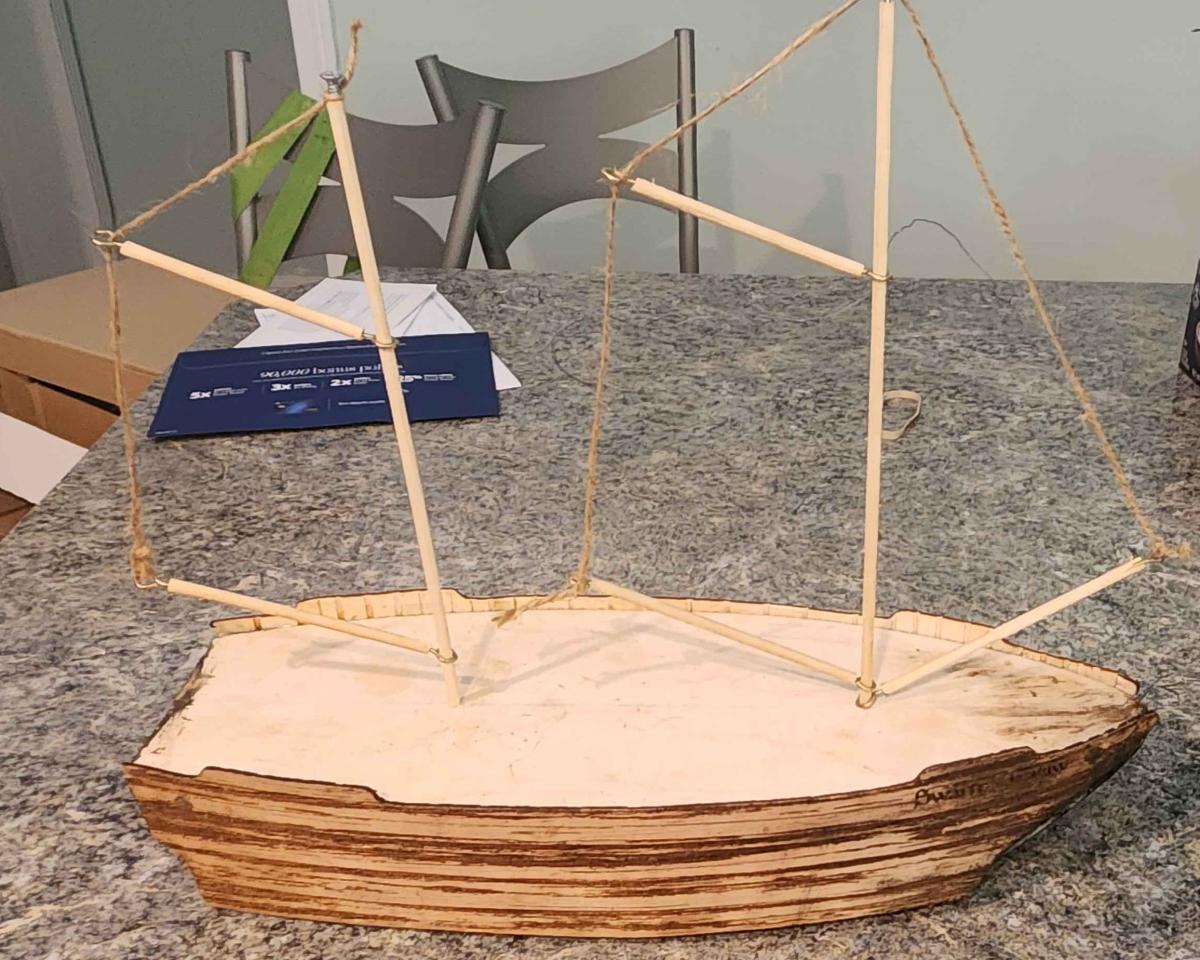
Materials Needed:
12”x24” sheet of 1/8th” thick laserable plywood, available in the Materials Store
4 to 5 10” long dowels, about 3/16” diameter
Attached .svg files for deck and hull shapes
24”x24”x2” thick extruded foam insulation board/project panel (not styrofoam/”beadboard”; too fragile)
Spare scrap wood/posterboard/cardstock, about a 12”x12” sheet’s worth
Roll of twine, length varies (see below)
12x threaded metal eyelets less than 3/16” in thread diameter, with openings just slightly over 3/16” in diameter
Zip ties or stiff rubber bands (former recommended over latter due to reliability and rigidity)
Super glue or wood glue (Gorilla Glue recommended for ease of use and low cost)
Wood stain (Optional)
Tools:
Laser cutter (Badge required)
Utility knife or other blade capable of cutting foam insulation board (MakeHaven’s foam cutter can also be used if you have the requisite badge.)
Wood saw and miter box (A table saw can also be used if you have the requisite badge)
Pin vise or hand drill and 3/16” drill bit (former recommended over latter for usage on dowels due to the fragility of the wood used)
Gloves and eye protection
